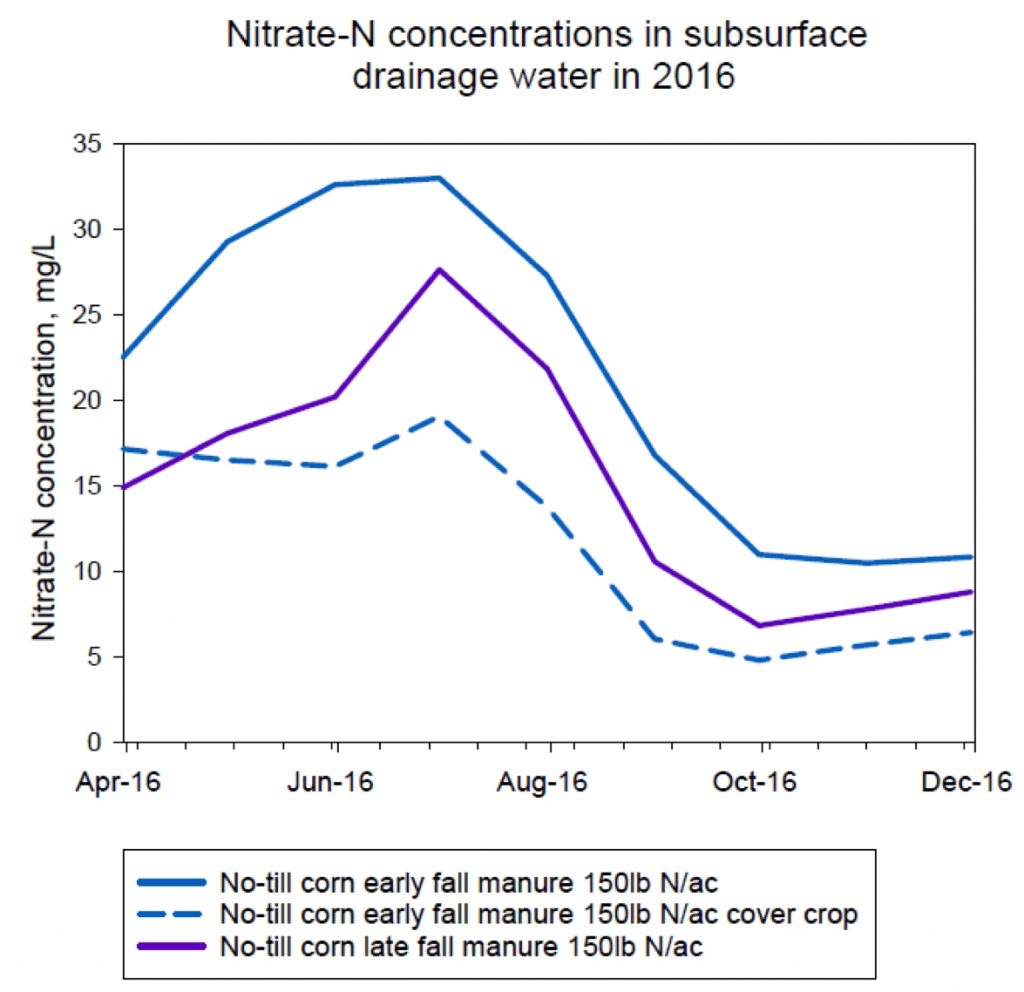
Features
Applications
Manure Application
Research
Swine
United States
Impact of swine manure application timing on drainage water quality– 2016 results
August 15, 2017 by Brian Dougherty Iowa State University
 First-year results from 2016 show adding a cereal rye cover crop resulted in a significant reduction in annual average nitrate-N levels and overall N losses via subsurface tile drainage water. In corn plots, early fall manure had the highest annual average nitrate-N concentrations of 20.5 mg/L, followed by late fall manure with 15.7 mg/L, and early fall manure with a cover crop at 11.3 mg/L (Figure 1). In a system with early fall swine manure application (when the soil temperature is above 50°F and early October in this study), nitrate-N concentrations were reduced by 45 percent when a cereal rye cover crop was added prior to corn. The nitrate-N concentrations from early manure with a cover crop were 28 percent lower than late manure (early November). Similarly, nitrate-N concentrations were 38 percent lower with cereal rye prior to soybeans. Iowa State University
First-year results from 2016 show adding a cereal rye cover crop resulted in a significant reduction in annual average nitrate-N levels and overall N losses via subsurface tile drainage water. In corn plots, early fall manure had the highest annual average nitrate-N concentrations of 20.5 mg/L, followed by late fall manure with 15.7 mg/L, and early fall manure with a cover crop at 11.3 mg/L (Figure 1). In a system with early fall swine manure application (when the soil temperature is above 50°F and early October in this study), nitrate-N concentrations were reduced by 45 percent when a cereal rye cover crop was added prior to corn. The nitrate-N concentrations from early manure with a cover crop were 28 percent lower than late manure (early November). Similarly, nitrate-N concentrations were 38 percent lower with cereal rye prior to soybeans. Iowa State UniversityAugust 15, 2017, Ames, IA – A three-year study, starting in 2016, at the Northeast Research and Demonstration Farm in Nashua, IA, began evaluating the impacts of various cropping and nutrient management systems on nitrogen and phosphorus loss through subsurface tile drainage.
This is particularly interesting to livestock producers regarding the impacts of swine manure application timing on drainage water quality.
The study allows for comparisons between early fall manure application (soil temperatures above 50°F) with and without a cereal rye cover crop and late fall manure applications (soil temperatures below 50°F).
Late fall manure with and without a nitrification inhibitor is also being compared to spring manure application. Results from this study will give producers valuable information regarding the water quality impacts of different manure management practices.